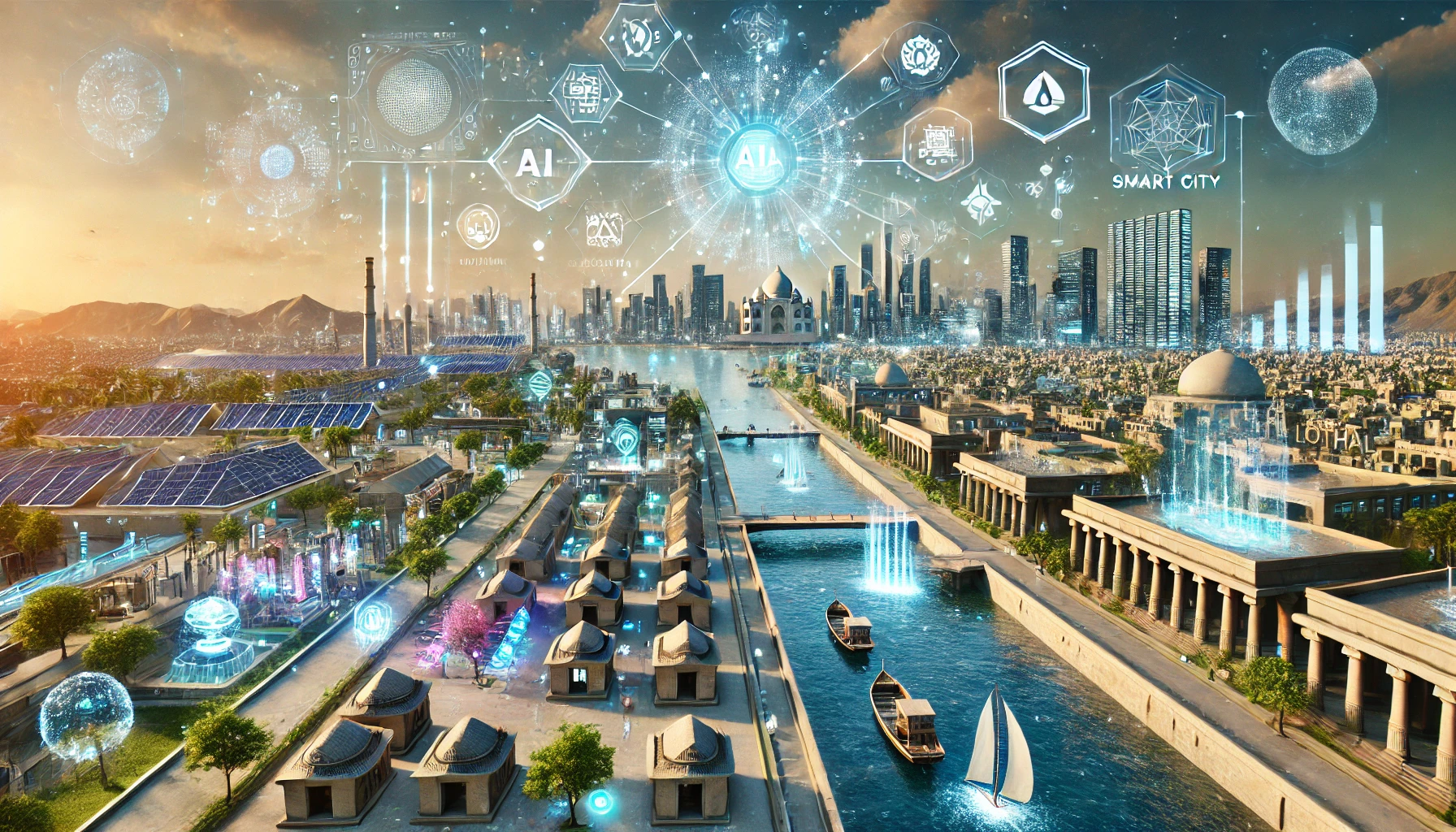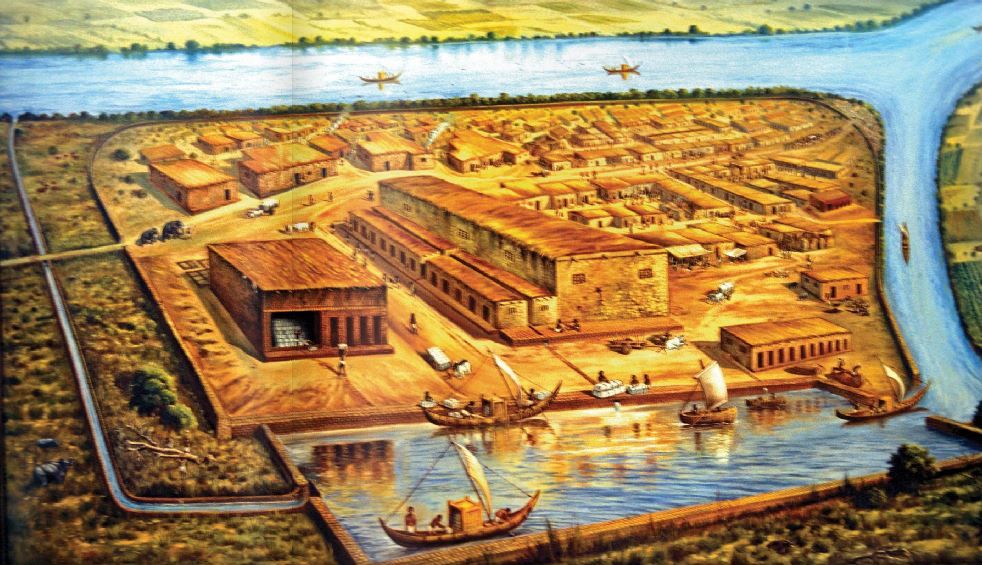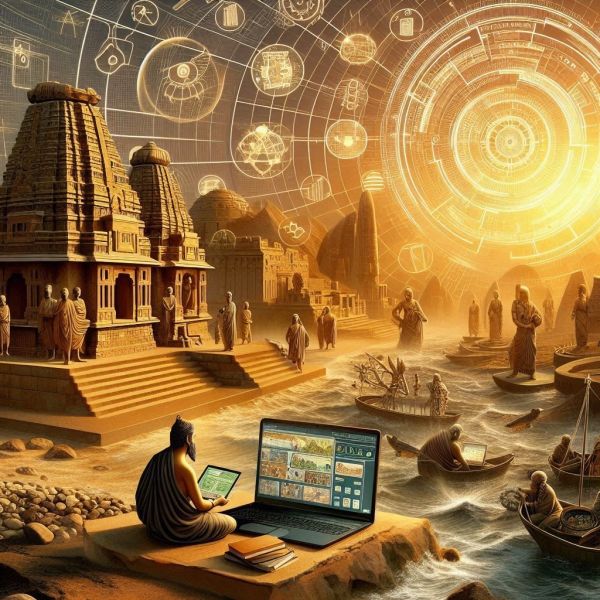How can modern smart(er) cities learn from ancient urban planning principles and use Web 3.0 technologies like AI, blockchain, and metaverse to enhance urban resilience, sustainability, and community engagement? Here’s how we can integrate historical wisdom with cutting-edge technology that promises more efficient, sustainable, and livable urban environments.

The cities of ancient India during the Indus civilisation, which flourished around 3300–1300 BCE in what is now Pakistan and northwest India, didn’t just appear overnight. They came into being through a gradual process of urbanisation, which started in the early prehistoric era and unfolded through different historical stages.
This gradual evolution of urban culture is evidence that history goes deeper into the layers of time and that the forces of nature contributed to what it took to build these cities.
The ancient Indus Valley Civilisation practices are still followed in the modern era. This lays the very foundation of our modern cities with features like urban resilience, sustainability, and community participation. This, in its true essence, provides an exciting prospect for modern professionals, including architects, computing experts, urban planners, and engineers.
Just imagine the possibilities when we combine the wisdom of our ancestors with the modern technological advancements like Artificial Intelligence, IoT, 3D and spatial computing, digital twin technology, and many others that shape the Web 3.0 era. This potential for progress should inspire and give hope for the future of urban development.
How would modern technology enhance the Indus Valley Civilisation foundational practices and improve community experiences?
The historical architecture of Indus Valley Civilisation, which stands as a marvel even for the modern times, not only piques our interest but also holds immense potential for exemplifying modern urban development.
The ingenious water management system of wells, reservoirs, and early sanitation during Indus Valley Civilisation, sets a remarkable precedent in urban planning. Their ability to handle monsoon water and prevent flooding was truly ahead of its time. Barcelona, for instance, takes ideas for sustainable water handling practices and ensures better resource efficiency. The city uses smart water technology to monitor real-time consumption and detect leaks.
The renowned planned grid layouts and efficient zoning of the Indus Valley Civilisation cities set a high standard for urban planning. The cities had regular blocks of houses for residents of different skills and status. These well planned cities exhibited significant evidence of trade, with public granaries and well-planned dwellings.
The meticulous planning, the use of interlocking bricks for solid walls, and the construction of unique buildings on citadels – all this is nothing, but speaks about the sophistication of their urban planning.
The cities were typically divided into higher western parts, called the citadels, and more extensive. The lower eastern parts, also called the lower towns, were a unique feature of this urban landscape. This level of urban planning, executed with such precision, is a true marvel to explore and respect.
The modern-day city of Songdo in South Korea takes this legacy forward by leveraging digital tools to enhance urban planning. Digital zoning strategies optimise land use, making residential, commercial, and recreational areas easily accessible. This digital enhancement ensures that modern cities are more adaptable and responsive to urban growth and community needs, a reassuring sign for the future of urban development.

The Indus Valley Civilisation integrated city planning with natural landscapes, using local materials and sustainable construction techniques. They understood seasonal patterns and resources, promoting sustainable urban living.
By integrating ancient principles with modern innovations, cities can achieve resilient and eco-friendly urban development. In fact, modern cities are surpassing the Indus Valley Civilisation’s sustainable practices by not only using local materials but also by implementing advanced technologies for energy efficiency and waste management. Modern smart cities are increasingly embracing green building materials, renewable energy sources, and energy-efficient infrastructure. Copenhagen‘s Nordhavn district aims for carbon neutrality through innovative design and sustainable practices.
The cities of the Indus Valley Civilisation, with their advanced drainage systems and public baths, set a high standard for public health. They managed waste efficiently, minimising health risks. The smart cities of today are taking this legacy forward by improving public health standards with advanced sanitation systems. Singapore‘s Deep Tunnel Sewerage System, for instance, uses technology to manage waste effectively and maintain high hygiene standards.
The communal spaces like public baths and assembly halls in the Indus Valley Civilisation ensured social cohesion and community engagement. In the similar manner, Ancient Greek plazas also served as central meeting places for civic interaction. The “Eixample” grid pattern in Barcelona, redesigned with smart infrastructure like superblocks, enhances community connectivity and walkability.
Web 3.0 Technologies: A saviour or lifeline for the ancient Indus civilisation?
Imagine if the ancient Indus Valley Civilisation had access to Web 3.0 technologies like AI, blockchain, and the metaverse. These tools could have significantly bolstered their resilience and recovery from calamities or environmental challenges that contributed to their decline. Here’s a glimpse of how these technologies could have made a difference:

It uses artificial intelligence (AI), predictive modelling, and data analysis to forecast environmental changes, natural disasters, and resource depletion and develop better preparedness and mitigation strategies. It also emphasises the role of machine learning algorithms in optimising resource allocation, urban planning, and infrastructure maintenance to build sustainable and resilient cities.
Blockchain and decentralised systems could benefit governance for inclusive decision-making during crises, tokenisation and incentive mechanisms for collective efforts in environmental conservation and disaster management, and immutable record-keeping for preserving crucial data and knowledge for future generations.
Metaverse and digital twins are used to create virtual replicas of Indus cities for simulations and urban planning, immersive environments for disaster preparedness training, and 3D visualisations of symmetrical or mirrored digital cities to preserve and study the architectural marvels of the Indus Civilisation.
The Future of Smart Cities: Why is a historical perspective necessary?
Incorporating historical insights into smart city planning ensures that these urban areas are not only technologically advanced but also culturally rich and resilient. By learning from the past, cities can develop infrastructure and systems that are both innovative and rooted in time-tested practices.
People need to be involved in making smart cities because these cities are mainly for the people who live and work there. That’s why it’s so important for citizens to have a say in the planning, design, and carrying out of smart city projects. Their opinions and ideas are key to the success of these projects. They can get involved by attending community meetings, filling out surveys, and taking part in other outreach activities.
Dilip Pungliya is a business leader, Artificial Intelligence consultant, blockchain advisor, metaverse solution expert, data leader, technologist, and business, process, & technology architect. As a board member and significant shareholder of Ztudium, Dilip brings a wealth of experience in business leadership and data technology. In his role as the Managing Partner of the ztudium Group, he benchmarks his strategic acumen in steering effective strategy and framework development for the company. Dilip also plays a pivotal role in his family’s limited company in India, VPRPL, where he oversees operations and strategic planning. His professional journey includes impactful collaborations with esteemed organisations such as Shell, the Department for Environment Food and Rural Affairs, Deutsche Bank, ICBC Standard Bank Plc, BNP Paribas, and HSBC Investments. Beyond his professional endeavours, Dilip is deeply committed to philanthropy and charitable work, particularly during the global challenges presented by the COVID-19 pandemic.












